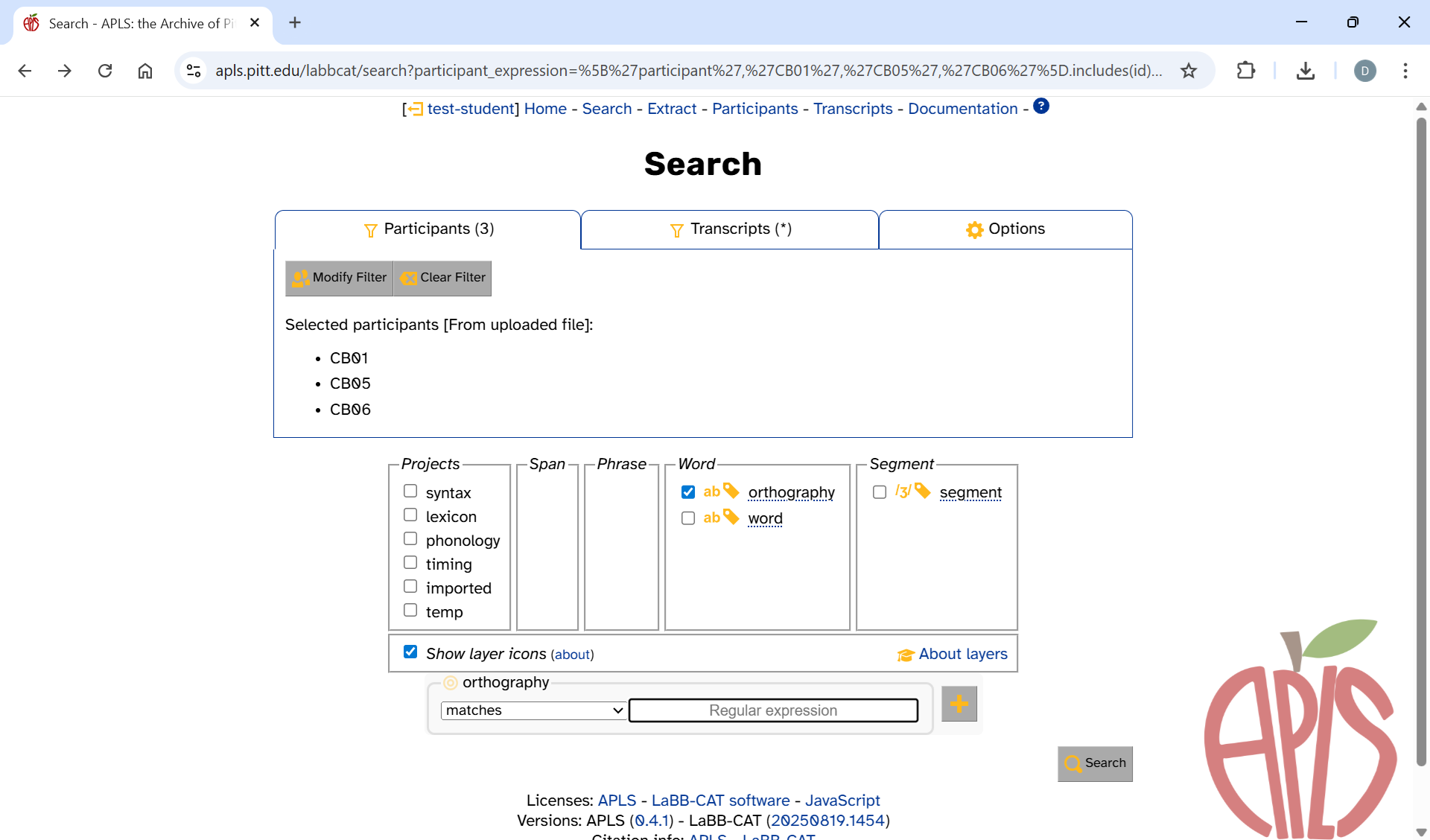Search filters and options
The Search page by default will conduct searches on all data in APLS. You can limit your search to a selection of participants and/or transcripts using the participants and transcripts filters.
You can also specify additional match and display options for your search using the search options.
On this page
Filtering participants
The participants filter is located in the Participants tab. Here’s what the Participants tab looks like when you first load the Search page:
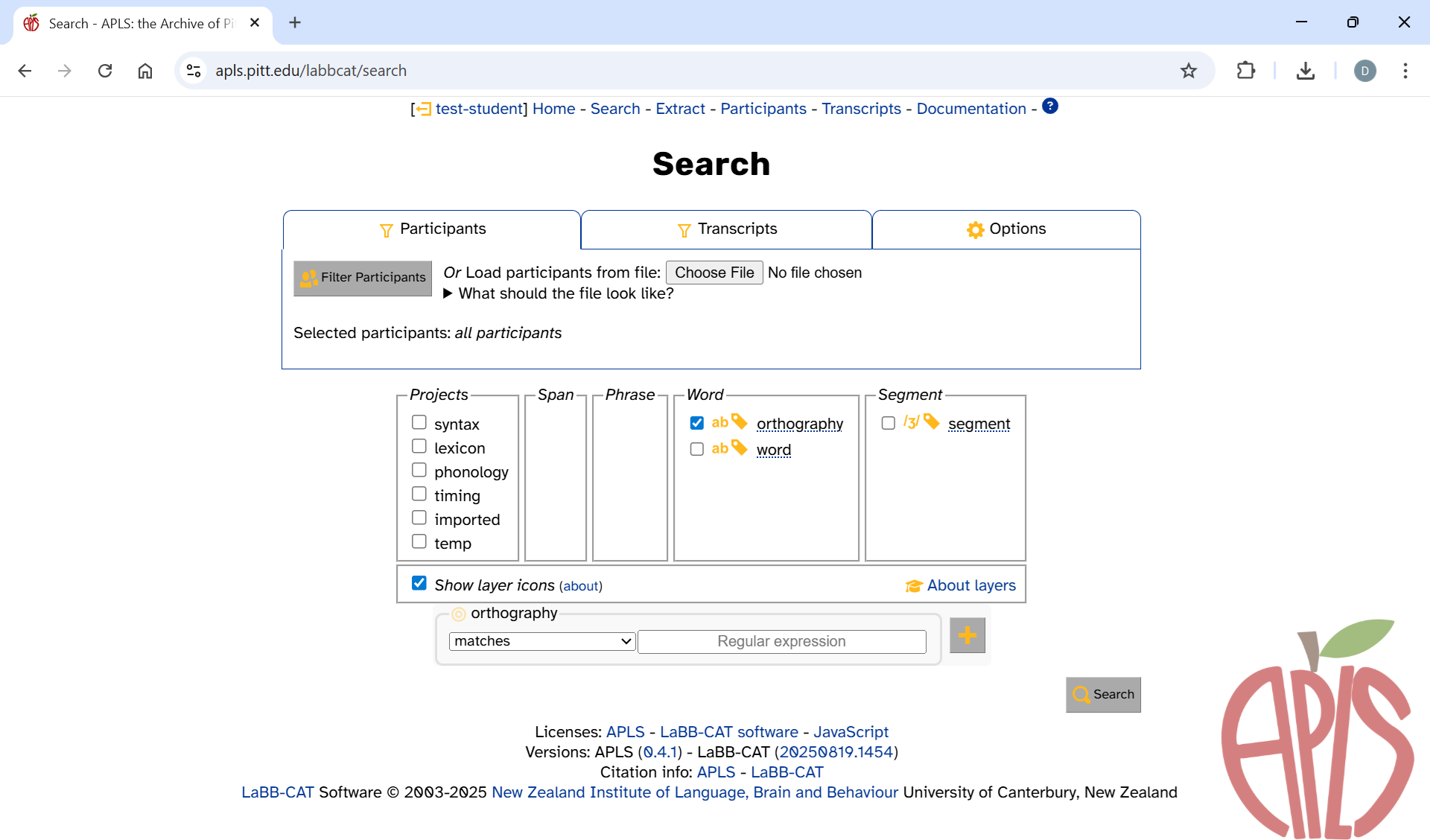
There are two ways to filter participants: click the Filter Participants button or upload a file with a list of participants.
If you want to only include matches from the main participant in a transcript but don’t care about other participant attributes, use the Only include matches from the main participant in a transcript search option instead.
Filter Participants
Clicking Filter Participants will take you to the Participants page, with the export menu limited to just the Layered Search button:
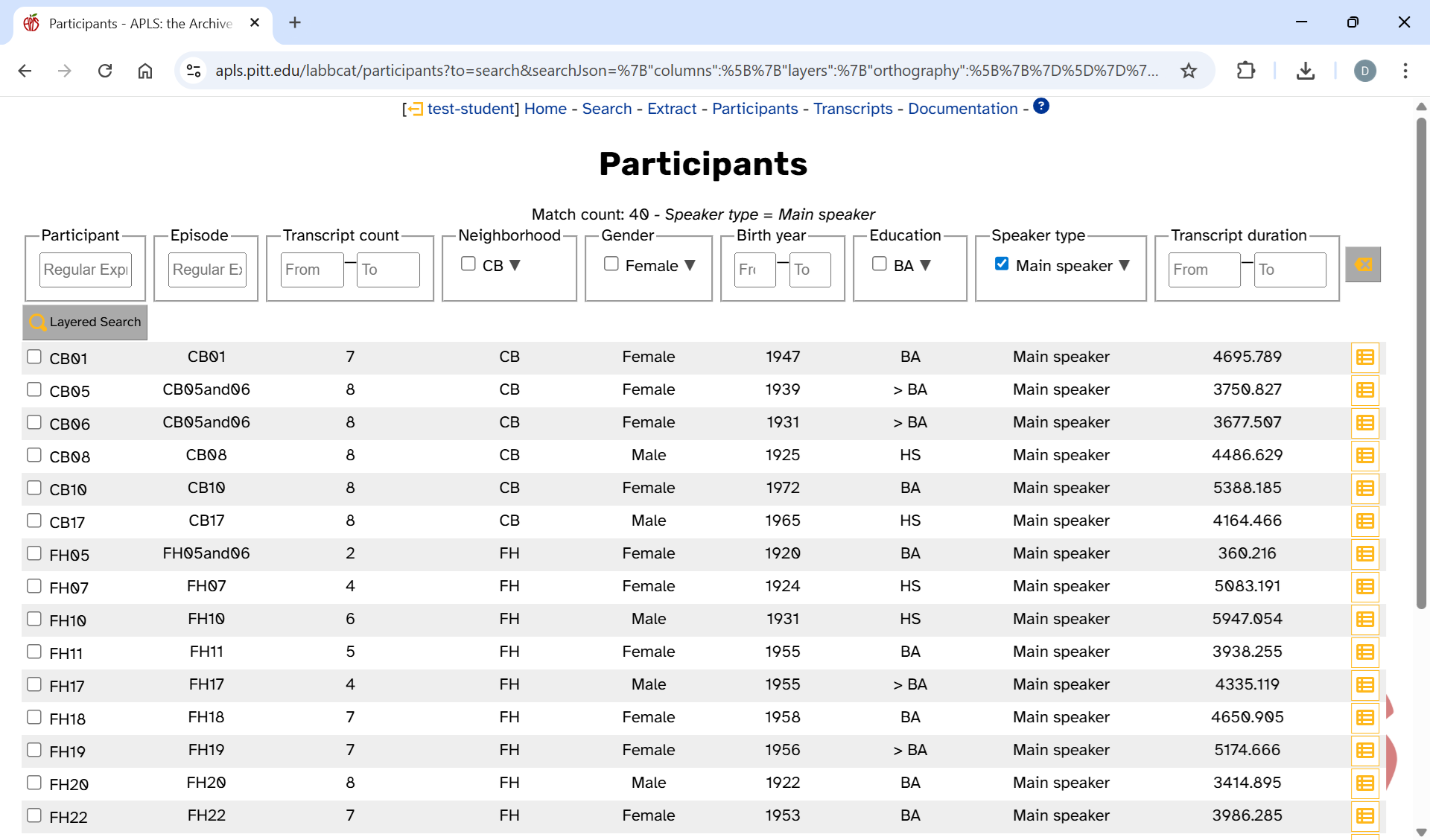
By default, when you load the Participants page, the type filter is set to
Main speaker(in other words, interviewees). If you want to clear this filter (or any others), click thebutton to the right of the filters.
From the Participants page, specify which participants you would like to include in your search by either specifying a filter or clicking checkboxes next to participants’ names. If you specify a filter for the Participants page and don’t click any checkboxes, then it will select all participants matched by the filter (see export menu selection rules). Once you’ve created a filter or selected participants, click Layered Search to return to the Search page. For example, here’s what it looks like when you select the Male box under Gender and the Main speaker box under Speaker type, then click Layered Search:
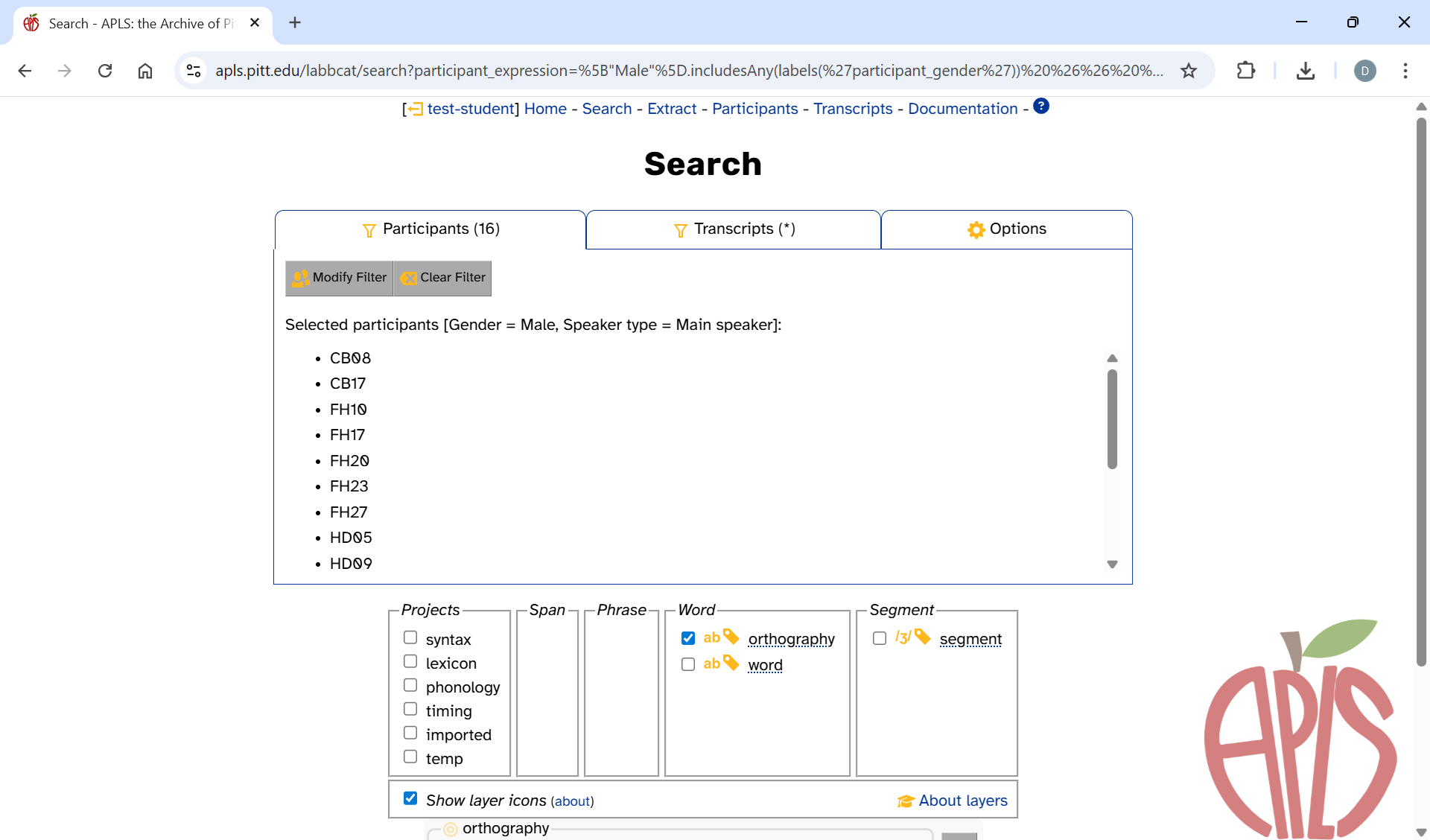
As you can see, the Participants tab looks a little different now:
- The tab label has been updated with the number of participants included in the filter (
(16)). - The Filter Participants button has been replaced with Modify Filter and Clear Filter.
- There’s no longer an option to upload a participant list.
- The tab displays the filtered attributes and values (
Gender = Male, Speaker type = Main speaker) and the participants matched by the filter (CB08,CB17, etc.).
In addition to these changes, the Transcripts tab label has been updated to include
(*). This is a visual reminder that when participants are filtered, logically, not all transcripts will be searched (because each participant only appears in certain transcripts). Below, you can read about filtering participants and transcripts at the same time.
Clicking Modify Filter will bring the Participants page back up so you can modify the filter you previously specified. Clicking Clear Filter will remove the participant filter and reset the Participants tab.
If you select participants individually (by clicking their checkboxes on the Participants page) instead of specifying a filter, there’s no Modify button, only a Clear Selections button. Here’s what it looks like if you select CB01 and FH05 on the Participants page and click Layered Search:
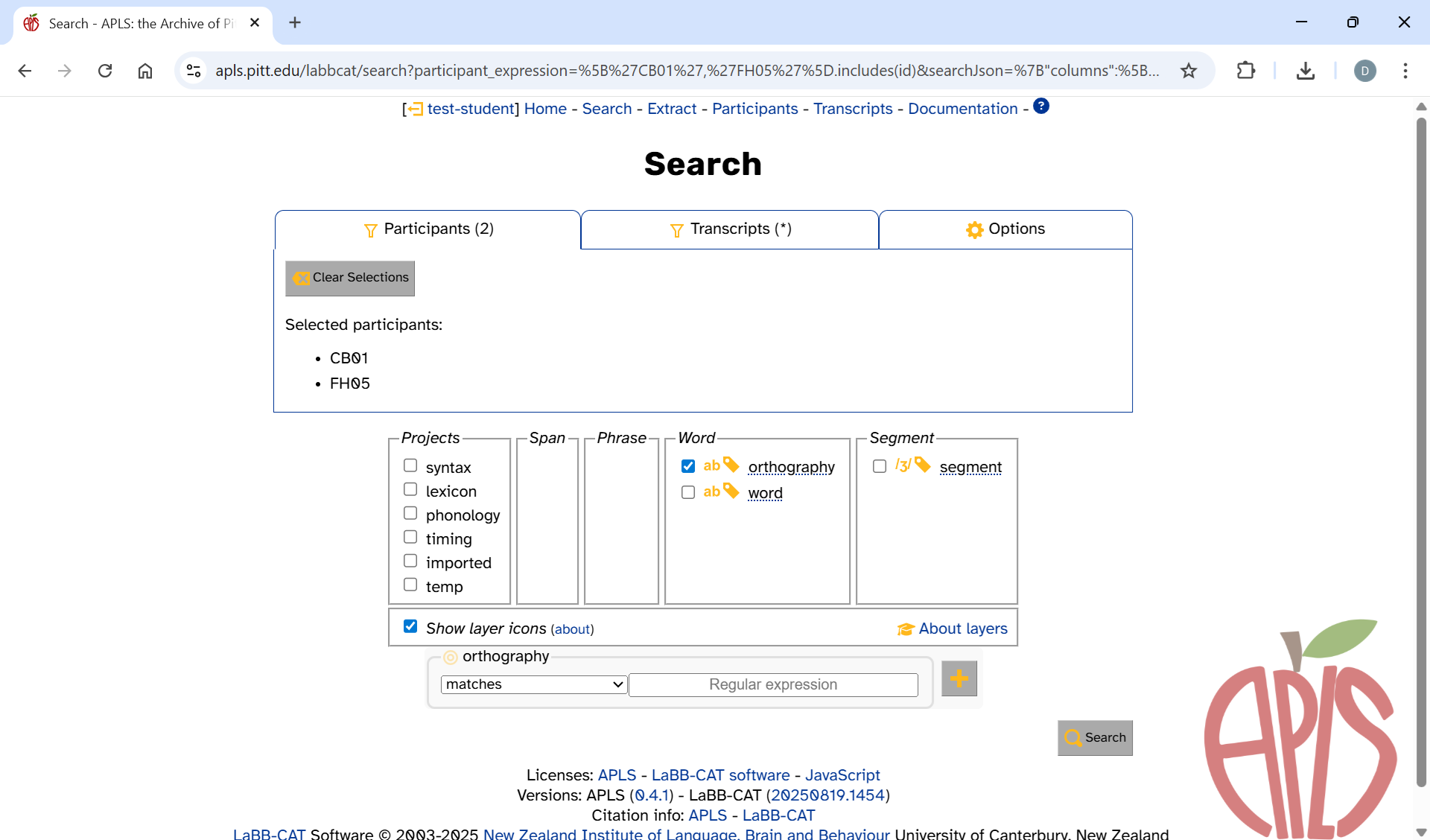
Finally, we’ve been discussing how to get to the Participants page from the Search page. But since the Layered Search button appears in the Participants page’s export menu when you load the page normally, you can just start straight from there and achieve the same result. More information about the Participants page can be found on the Browsing participants documentation page.
Uploading a participant list
You can also upload a file containing participant codes to the participants filter by clicking the Choose File button (or dragging-and-dropping a file onto the button). You might want to do this if you want to filter participants by attributes that aren’t listed on the Participants page (like occupation). Saving your participant list in a separate file can also aid the reproducibility
The participant list needs to have a specific file format. You can find these requirements on the Participants tab in the What should the file look like? collapsible info-box:
One of the following:
- Plain text (.txt)
- One participant code per line
- Invalid participant codes ignored
- Comma-separated values (.csv)
- Participant codes in the first column
- Invalid participant codes ignored
- Duplicate participant codes ignored
- Tab-separated values (.tsv)
- Participant codes in the first column
- Invalid participant codes ignored
- Duplicate participant codes ignored
- Go to the Participants page.
- Click the checkboxes for CB01, CB05, and CB06.
- Click the Export Attributes button twice to download the
participants.csvfile.
- You can learn more about the options of the Export participant data page on the Browsing participants documentation page.
- Go to the Search page.
- Open the Participants tab, click Choose File, and select the
participants.csvfile.Here’s what that should look like:
Filtering transcripts
The transcript filter is located in the Transcripts tab. Here’s what the Transcripts tab looks like when you first load the Search page:

The transcript filter works just like the participant filter, except that it loads the Transcript page instead of the Participants page. For example, here’s what it looks like when you click the Filter Transcripts button, select reading under Transcript type & Cranberry Township under Neighborhood, and click Layered Search:

There’s an important difference between the participant attribute neighborhood and the transcript attribute neighborhood. Let’s take Cranberry Township as an example. If you use the transcript filter
Neighborhood = Cranberry Township, you’ll get search matches from allCB...eaftranscripts, regardless of who’s speaking. If you use the participant filterNeighborhood = CB, you’ll only get search matches fromCBparticipants. SinceCBparticipants are only inCB...eaftranscripts (and the same is true for other neighborhoods), this means the participant filter will return fewer matches than the transcript filter. However, if you’re filtering participants and transcripts at the same time, you can specify the neighborhood attribute for either and it shouldn’t affect the search matches you get.
Filtering participants and transcripts at the same time
You can specify both a participant filter and a transcript filter at the same time. This is useful if, for example, you only want to search minimal pairs tasks from male participants who are main speakers.
To do this, start with a participant filter (either using the Filter Participants button or uploading a participant list). Then on the Transcripts tab, either click Filter Transcripts or upload a transcript list. If you click Filter Transcripts, the Transcripts page will only show the transcripts that contain the participants in the filter. Here’s what that looks like:
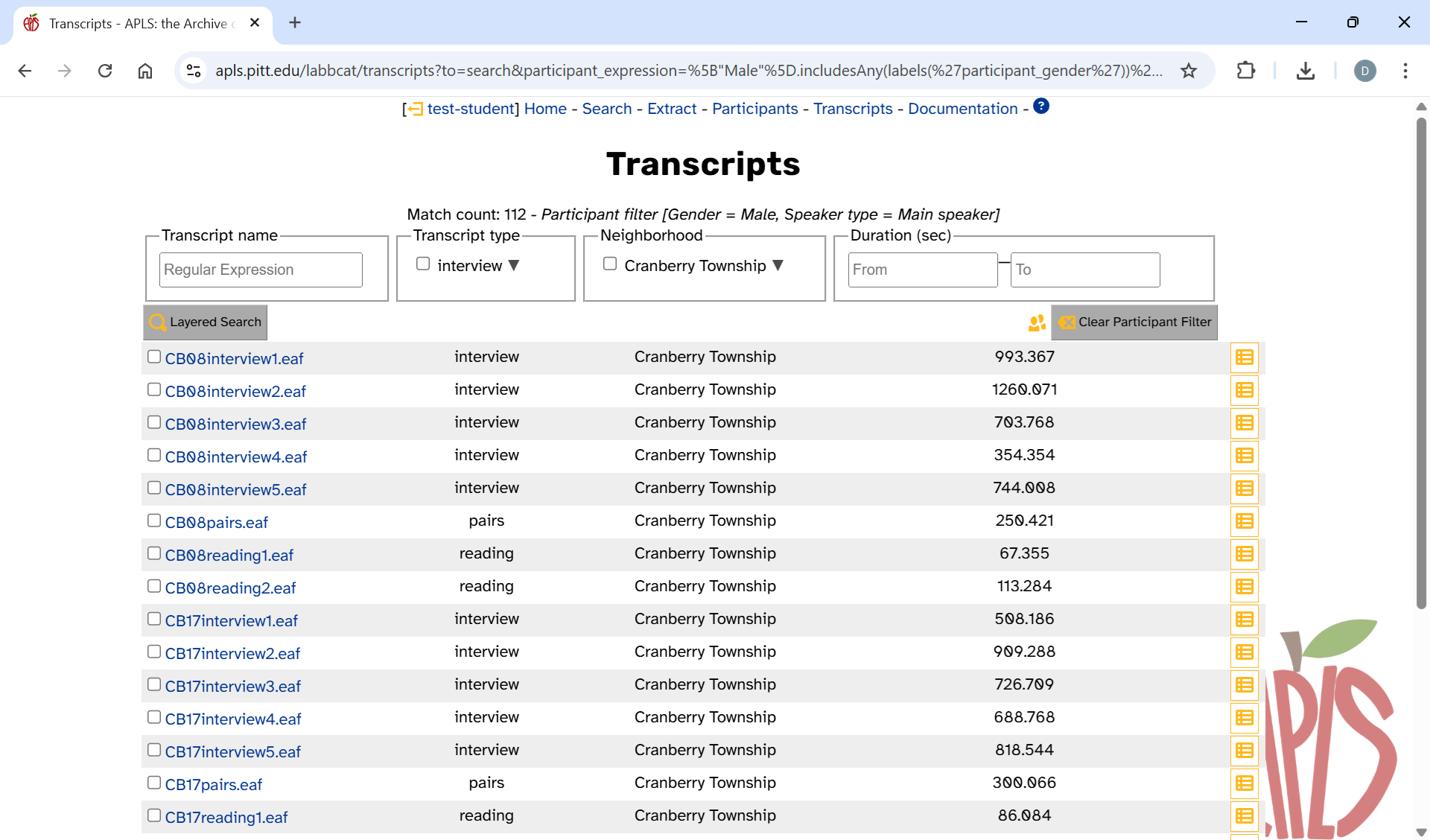
If you click Clear Participant Filter, it will remove the participant filter from the search too.
Then you can specify a transcript filter or select transcript checkboxes, and click Layered Search to return to the Search page. Going from the previous image, here’s what it looks like when you select reading under Transcript type, then click Layered Search:
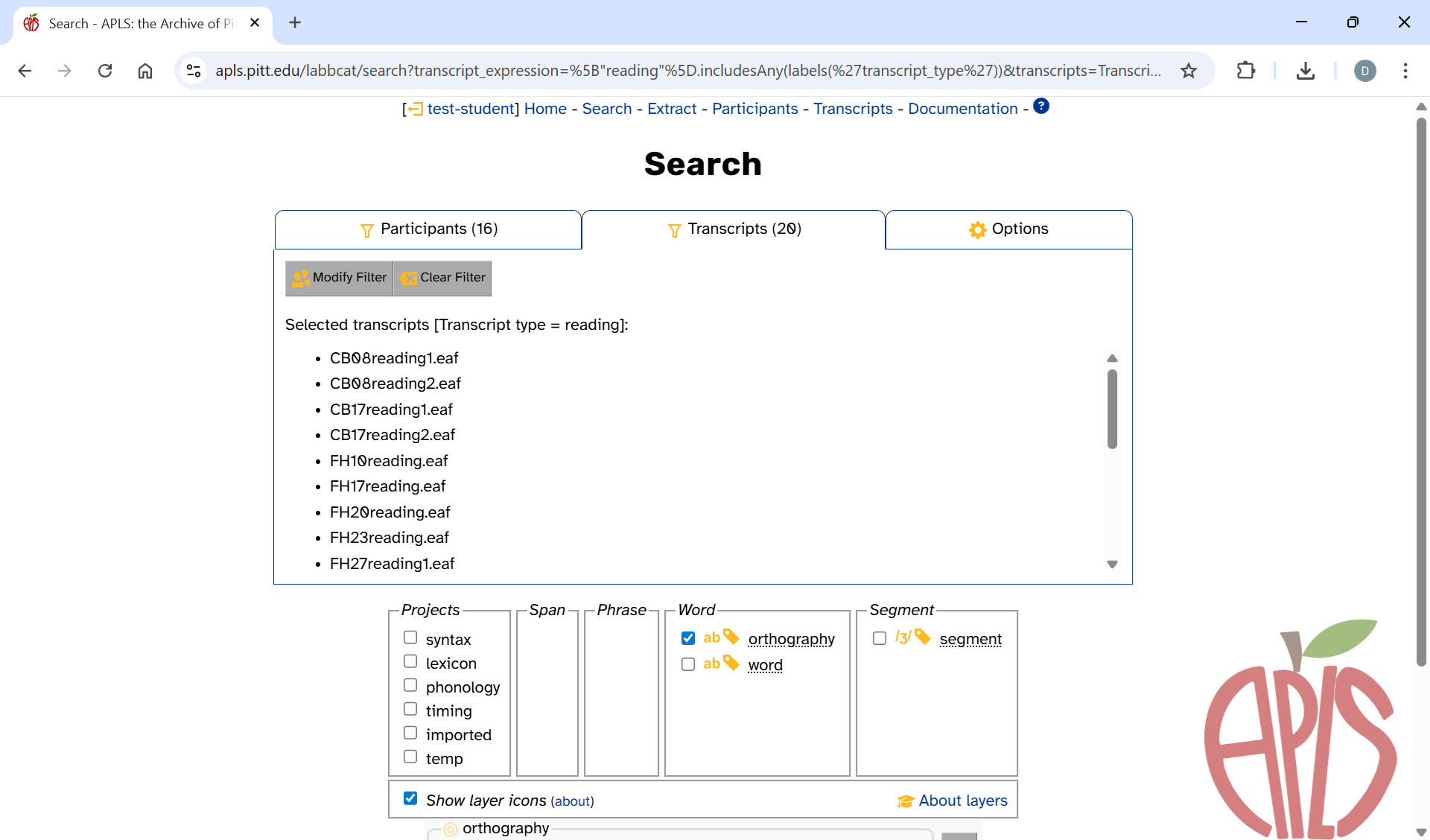
Due to technical limitations, you have to select the participant filter first if you want to filter both participants and transcripts. As a a result, selecting a participant filter after a transcript filter will overwrite the transcript filter. If you try to do that, APLS will warn you and give you the option to back out:
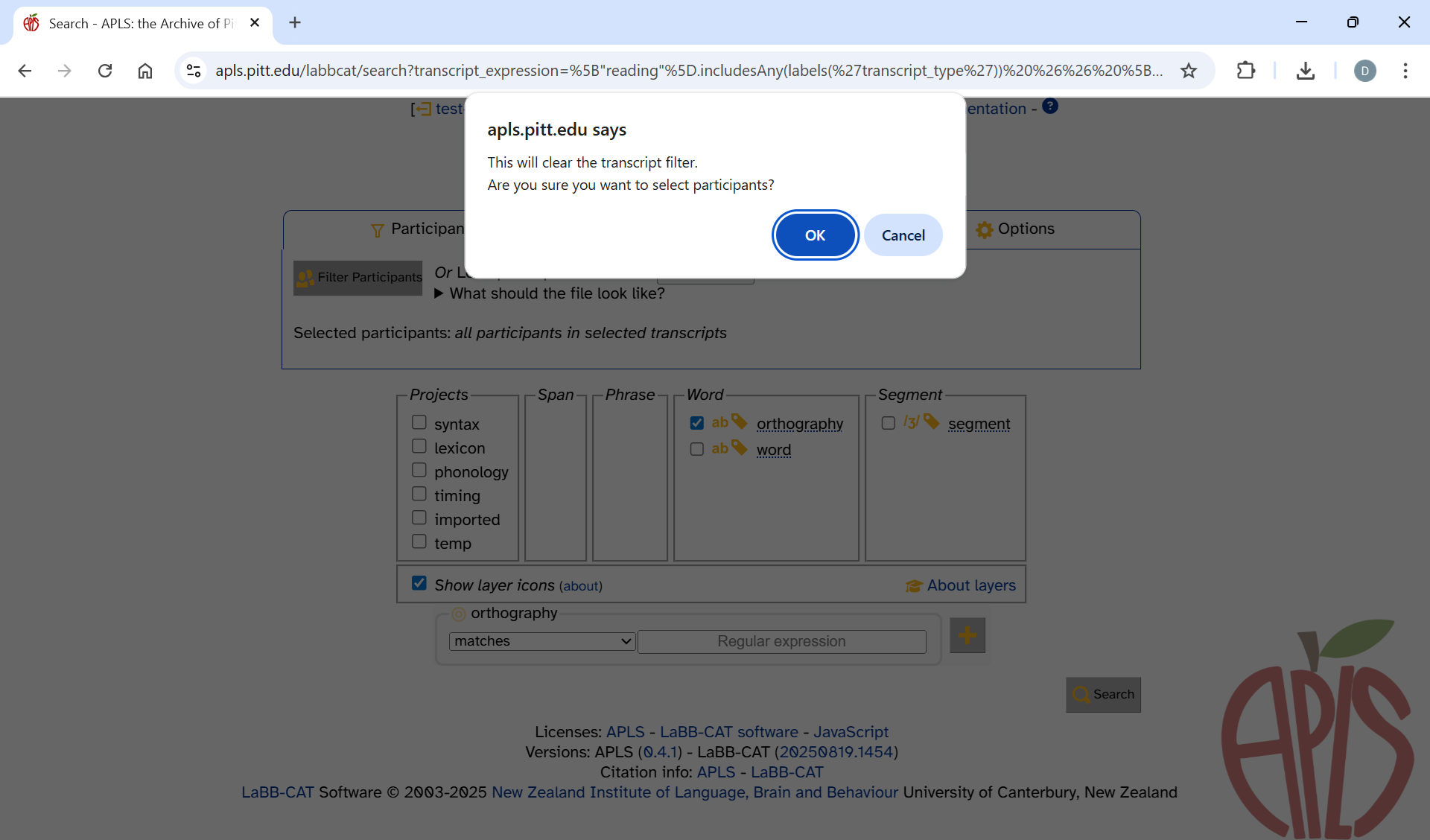
Search options
In the Options tab are checkboxes that let you set certain match and display options for your search:
- Only include matches from the main participant in a transcript.
- This restricts the search to only include matches from ‘Main speaker’ participants, excluding matches from interviewers and bystanders.
- Only match words that are aligned.
- This checkbox restricts your search to only match tokens that have alignments on the segment layer, ignoring any tokens that have not been aligned yet.
- If you’re searching a segment-dependent layer, then this option is redundant, since the search results will only include aligned tokens anyway.
- Only one match per transcript.
- This checkbox restricts the search results to one match per transcript, allowing you to identify transcripts that contain a given pattern without listing all instances of that pattern in the transcript.
- No matches, only a count of results.
- This checkbox will prevent the Search page from automatically opening a new tab with the Search results page displaying the results (although results can still be viewed by clicking on Display results underneath the progress bar once the search has completed).

